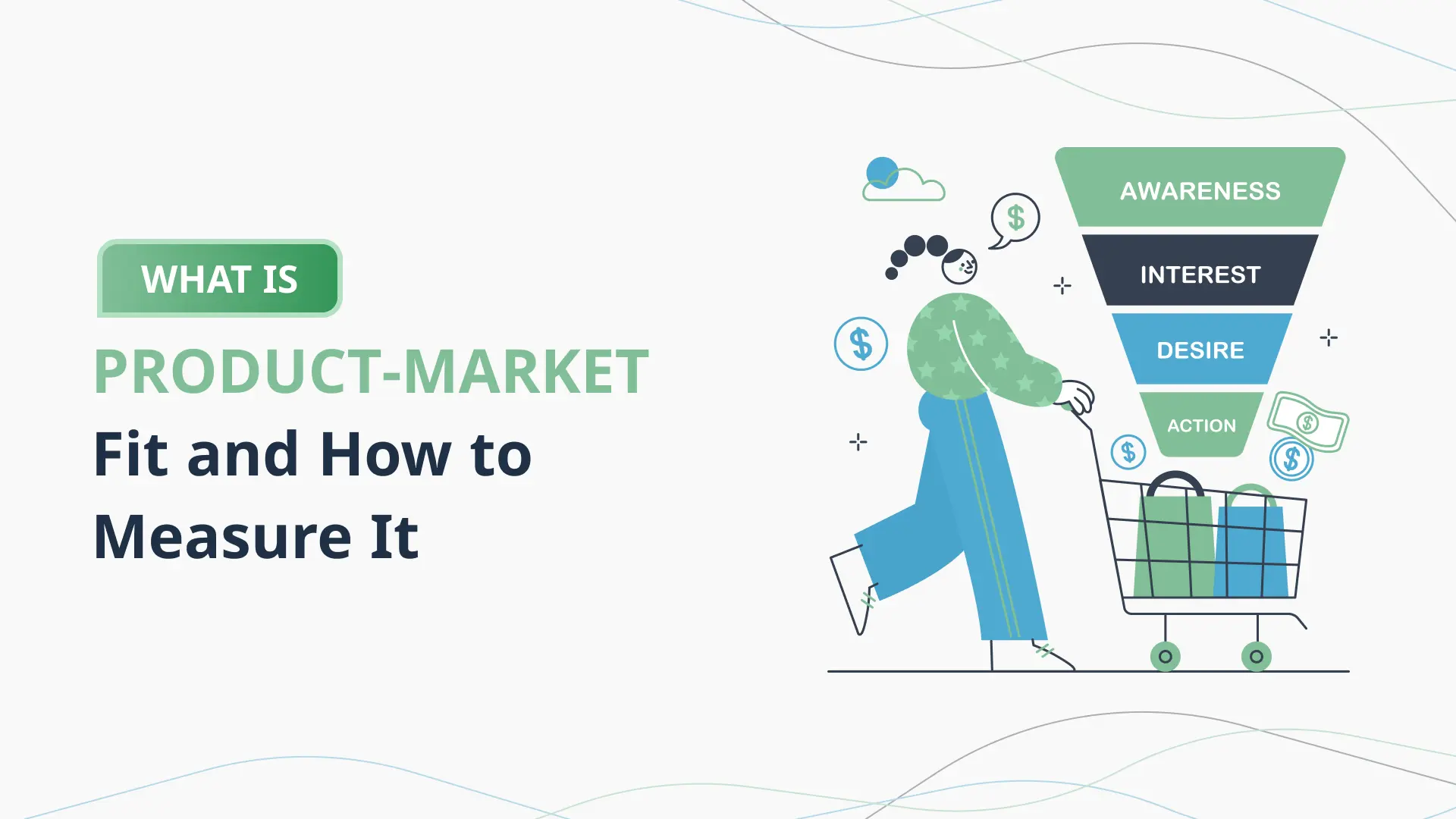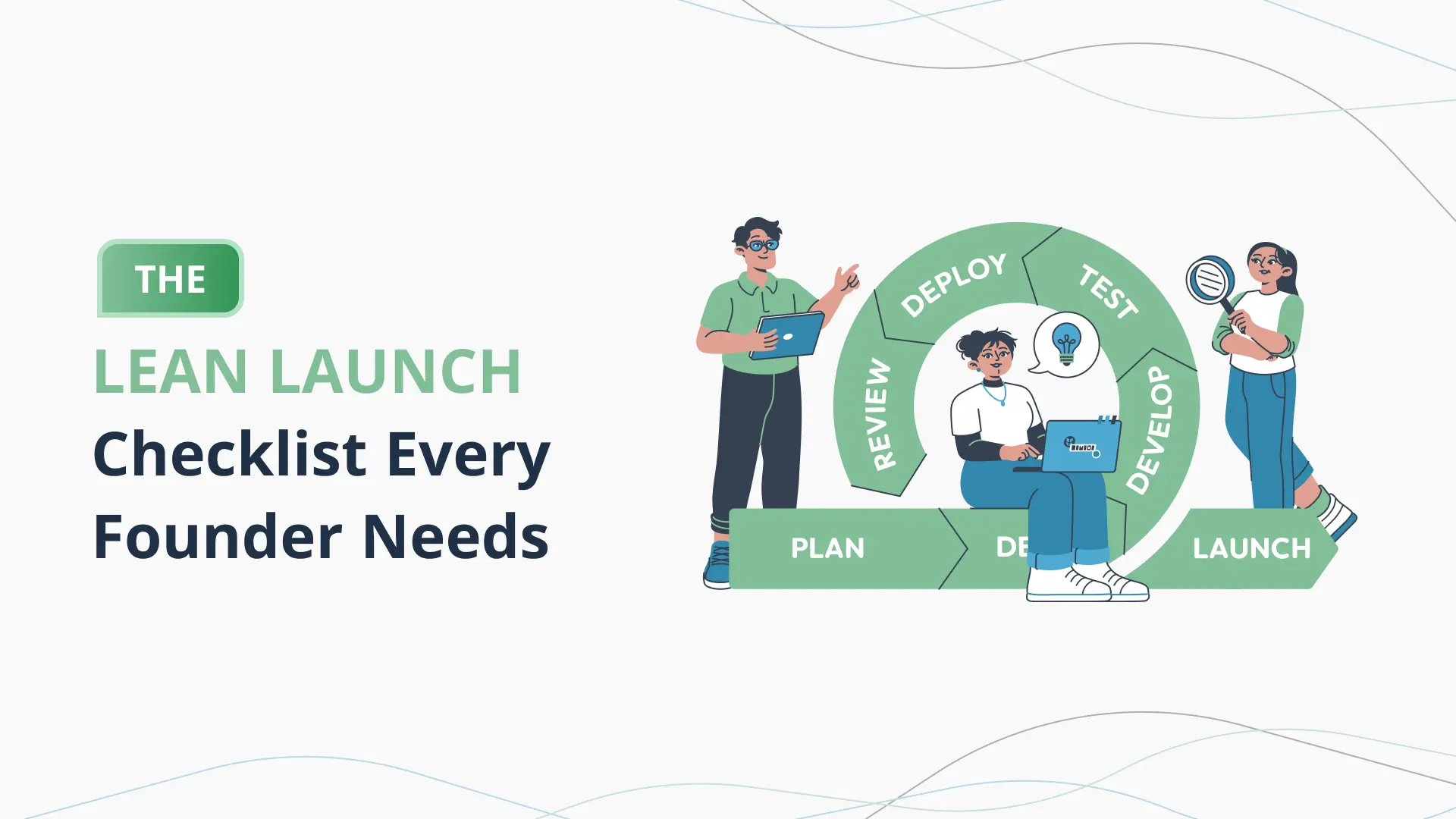What Is Product-Market Fit and How to Measure It

Introduction
In the chaotic, high-stakes world of startups, one term often emerges as the most crucial determinant of success: product-market fit. It’s the elusive milestone every founder chases — the point where your product doesn’t just exist in the market, but thrives in it. At this juncture, customers don’t need to be persuaded with gimmicks or aggressive sales tactics. They just get it. They want it. They use it, talk about it, and come back for more. This is product-market fit — and it can make or break your business.
Coined by famed venture capitalist Marc Andreessen, product-market fit (PMF) is simply “being in a good market with a product that can satisfy that market.” Sounds simple, right? But in practice, it’s one of the most complex and misunderstood phases in a startup’s lifecycle. Many entrepreneurs mistake early traction for PMF or attempt to scale prematurely, only to burn through their resources without ever locking in that deep resonance with their target audience.
Understanding product-market fit is more than an academic exercise — it’s the foundation of sustainable growth. Achieving it means you’ve found a real need in the market and built a solution that customers genuinely want. Without it, no amount of marketing or funding will save a startup from eventual failure. But once you hit PMF, everything changes. Your users turn into advocates. Your marketing spend becomes more efficient. Growth feels less like pushing a boulder uphill and more like catching a strong tailwind.
This blog post is a deep dive into the concept of product-market fit: what it is, why it matters, and how you can measure it effectively. We’ll walk through real-world examples of companies that nailed their PMF, explore the common challenges that prevent startups from achieving it, and highlight the key indicators that signal you’re on the right track.
Most importantly, we’ll discuss how AI-powered startup planning tools like the PlanVista app can streamline your path to product-market fit. With features that include automated customer feedback analysis, predictive trend modeling, and tailored business plan generation, PlanVista is not just another tool — it’s your co-pilot in the journey from idea to market validation.
Whether you’re a solo founder refining your MVP or a growing startup looking to solidify your market position, understanding and measuring product-market fit should be at the top of your priority list. It’s not about building what you think people want — it’s about building what people can’t live without. Let’s explore how to find that sweet spot.
Understanding Product-Market Fit
To truly appreciate the value of product-market fit (PMF), you need to go beyond the textbook definition. PMF is not just a milestone; it’s a dynamic state where everything in your business starts to click. Your product resonates deeply with a specific group of customers, and that resonance translates into user engagement, customer loyalty, and consistent revenue. This is the point where your solution isn’t just useful — it’s essential.
The Core Concept
At its heart, product-market fit is about alignment. Alignment between what you’re offering and what a clearly defined market desperately needs. When you’re in this sweet spot, customers don’t just tolerate your product — they seek it out, use it regularly, and recommend it enthusiastically. It’s that moment when your product becomes the go-to solution for a particular problem, and customers say, “Where has this been all my life?”
Many early-stage founders fall into the trap of focusing on features, funding, or marketing tactics without first validating that there’s a true need for what they’re building. But features won’t save a product no one really wants. This is why understanding PMF is non-negotiable — it prevents you from building a solution in search of a problem.
Signs You’re Approaching PMF
PMF doesn’t happen overnight. It’s often a gradual realization, marked by certain key signals:
- Strong Retention Rates: When customers stick around and keep using your product without constant nudging, you’re onto something.
- Consistent User Feedback: If users are giving unsolicited positive feedback, and you hear phrases like “I can’t imagine working without this,” that’s gold.
- Organic Growth: Word-of-mouth referrals increase because people genuinely want others to benefit from your product.
- Pricing Power: Customers are willing to pay, and more importantly, to pay again. When people see value, they’re happy to invest.
Each of these signs tells you that your product is no longer a hypothesis — it’s a validated solution with real market demand.
It’s About the Market Too
Product-market fit isn’t only about your product. The “market” part is just as crucial. You could have a brilliant solution, but if you’re targeting the wrong customer segment, your efforts will flop. It’s essential to understand who your customer is, what they need, and how they make decisions. PMF lives at the intersection of customer pain points, your product’s capabilities, and a market large enough to sustain your business.
Iteration Is Key
No product hits PMF on the first try. It’s a process of iteration, experimentation, and continuous learning. You build, measure, and learn in tight feedback loops. You tweak features, shift positioning, adjust pricing — all in the pursuit of that elusive but unmistakable product-market fit.
The good news? You don’t have to do it alone. Tools like PlanVista act as a compass, guiding startups through the fog of product development with AI-powered insights and structured planning. By helping you define your market, test your assumptions, and pivot intelligently, PlanVista makes finding PMF a more structured and less chaotic process.
Real-World Examples of Product-Market Fit
While the theory behind product-market fit (PMF) is powerful, real-world examples are where the concept truly comes to life. These stories illustrate what it looks like when a product and its market are perfectly aligned — and how that alignment can fuel meteoric growth. Let’s explore how some of today’s most successful companies achieved PMF, and what we can learn from their journeys.
Slack: From Gaming Tool to Communication Essential
Slack’s story is a textbook case of discovering product-market fit through iteration. Originally built as an internal messaging tool for a failed gaming startup, the founders realized their team communication tool had greater potential than the game itself. When they pivoted, Slack immediately resonated with teams looking for better collaboration.
What made Slack’s PMF so clear? The tool was intuitive, integrated easily with other apps, and addressed a real pain point: email overload. Within months, Slack gained thousands of users, not through massive ad spends, but through word-of-mouth and organic growth. It solved a widespread problem so elegantly that teams were eager to adopt it — and more importantly, they stuck with it.
Airbnb: Tapping Into Untapped Inventory
Airbnb didn’t start as a hospitality revolution. It began with air mattresses in a San Francisco apartment during a conference weekend. The idea was born from necessity, but it quickly evolved into a full-blown marketplace for short-term rentals.
Airbnb’s PMF moment came when they recognized a massive gap in the travel market — affordable, unique accommodations with local flair. Traditional hotels couldn’t offer the flexibility or personal touch that Airbnb hosts could. As travelers and hosts flocked to the platform, it became clear that the company had struck a deep chord. They had not only found a market, but also created a new category.
Dropbox: Simplicity Sells
Dropbox’s early growth was driven by a laser focus on simplicity. When file sharing and storage were still clunky and unreliable, Dropbox offered a clean, user-friendly experience that “just worked.” The company’s iconic demo video illustrated the value proposition so clearly that thousands signed up before the product was even fully available.
The lesson? PMF doesn’t require complex tech. It requires solving a real problem in a way that customers immediately understand. Dropbox’s growth through referrals and minimal marketing spend underscored the power of nailing product-market fit.
Notion: Productivity Reimagined
Notion found product-market fit by combining several fragmented tools — notes, tasks, databases, and wikis — into one cohesive platform. Their early community of power users became evangelists, shaping the product with feedback and driving viral growth through content and templates.
Notion’s success is a testament to listening to users and evolving the product around their needs. It also shows how powerful it can be to cater to a highly engaged niche before expanding outward.
These examples make one thing clear: product-market fit is a game-changer. When your solution perfectly aligns with a market’s unmet need, growth becomes a natural byproduct. And with the help of AI-powered startup planning tools like PlanVista, identifying and validating PMF becomes more systematic, less guesswork. PlanVista helps you analyze your market, refine your offering, and stay on course — just like the most successful startups did.
Challenges in Achieving Product-Market Fit
Reaching product-market fit is one of the most rewarding milestones for any startup — but also one of the most difficult to attain. Despite the allure of hitting that sweet spot where users love your product and growth becomes organic, the road is fraught with obstacles. Missteps here can derail an otherwise promising business. Let’s unpack the most common challenges founders face when striving for product-market fit and how to overcome them.
1. Misidentifying the Target Audience
One of the most fundamental mistakes is targeting the wrong customer segment. Founders often build products based on personal assumptions or a vague sense of who the “ideal user” is, without real validation. This leads to messaging that doesn’t land, features that go unused, and a product that seems disconnected from the market.
Solution: Use data and customer interviews to define clear user personas. Tools like PlanVista help you structure these personas and validate them with real market feedback, ensuring your efforts are aimed at the right audience from the start.
2. Solving a Non-Urgent Problem
Even a beautifully designed product will flop if it addresses a problem customers don’t care enough to fix. Many startups suffer from “nice-to-have” syndrome — solving minor inconveniences rather than urgent pain points. Without a strong emotional or financial incentive, users won’t adopt the product.
Solution: Prioritize customer pain points that are urgent, frequent, and expensive. Conduct surveys, interviews, and competitor analysis to understand what really matters to your market.
3. Feature Overload
In the race to please everyone, startups often cram their products with features. This dilutes the core value proposition and confuses users. Instead of loving one thing, users feel overwhelmed by ten.
Solution: Strip your product down to its MVP (Minimum Viable Product) — the smallest set of features that solves the core problem effectively. Focus on clarity and simplicity. Use feedback loops to guide incremental improvements.
4. Poor Market Timing
Sometimes the product is right, but the timing is off. Either the market isn’t ready, or it’s already saturated. Entering too early means educating a market that doesn’t yet recognize the need. Too late, and you’re just another voice in a noisy space.
Solution: Use trend analysis and market research — areas where AI tools like PlanVista excel — to identify optimal entry points and niches that are underserved but growing.
5. Ignoring Qualitative Feedback
Founders often get caught up in metrics like sign-ups and churn, while overlooking what users are actually saying. These qualitative insights reveal deeper emotional drivers, frustrations, and unmet needs that numbers alone can’t capture.
Solution: Listen actively to your users. Monitor reviews, conduct open-ended interviews, and use sentiment analysis — another strength of the PlanVista app — to decode what your users truly think and feel.
Measuring Product-Market Fit
You’ve built a product, launched it to the world, and have some users engaging with it — but how do you know if you’ve truly hit product-market fit (PMF)? While PMF often “feels” like momentum — users are happy, referrals are up, and churn is down — relying solely on gut instinct can be misleading. That’s why it’s essential to use concrete metrics and frameworks to measure product-market fit effectively.
The Sean Ellis Test
One of the most popular and practical methods to assess PMF comes from Sean Ellis, the growth hacker behind Dropbox and Eventbrite. He recommends asking your users one key question:
“How would you feel if you could no longer use this product?”
If at least 40% of users say they’d be “very disappointed,” you’re likely at product-market fit. This method cuts through vanity metrics and gets to the emotional dependency your users have on the product — a critical signal of deep value.
Net Promoter Score (NPS)
NPS measures customer loyalty by asking users how likely they are to recommend your product to others on a scale from 0 to 10. High NPS indicates that your users not only enjoy your product but are also advocating for it. PMF usually correlates with an NPS of 50 or higher, though this can vary by industry.
Retention and Engagement Rates
Strong retention over time is one of the clearest signs of PMF. If users keep coming back without constant nudging, it means your product has become a part of their workflow or lifestyle. Look at metrics like:
- Daily Active Users (DAU) / Monthly Active Users (MAU)
- Churn Rate
- Session Duration and Frequency
If users log in frequently, stay for extended periods, and return consistently, those are strong indicators of a good product-market fit.
Qualitative Feedback
Beyond metrics, listen to what users are actually saying. Do they describe your product as indispensable? Are they using your product in ways you didn’t expect but that still add value? Are they submitting feature requests or praising updates? These signals suggest high engagement and a strong connection to your solution.
Tools like PlanVista make gathering and interpreting this feedback easy. With sentiment analysis and automated survey integration, you can quickly identify trends in user feedback and understand what’s truly resonating.
Organic Growth Indicators
When your product starts growing without paid ads or heavy promotion, it’s a sign that users are finding value and spreading the word. Key indicators include:
- Referral Traffic
- User-to-User Invitations
- Social Media Mentions and Community Buzz
PlanVista helps track and visualize these patterns, enabling you to see where your traction is coming from and why it’s happening.
CAC vs. LTV
Finally, if your Customer Acquisition Cost (CAC) is significantly lower than your Customer Lifetime Value (LTV), it’s a good financial indicator of PMF. It means your customers stay long enough and spend enough to make your acquisition strategy sustainable.
Leveraging AI Tools Like PlanVista
Achieving product-market fit is no longer a purely instinctual process. In the modern startup ecosystem, artificial intelligence (AI) is revolutionizing how entrepreneurs plan, iterate, and optimize their products. One of the most impactful innovations in this space is the emergence of AI-driven business planning platforms like PlanVista, designed to streamline the path to product-market fit and scale startup success.
The Power of AI in Startup Planning
Traditionally, founders relied on gut feelings, anecdotal feedback, and trial-and-error experimentation to refine their product and target market. But with AI, you can now tap into real-time data analysis, behavioral insights, and predictive modeling — dramatically accelerating your understanding of what works and what doesn’t.
PlanVista combines these capabilities into one streamlined platform. It’s not just a business plan generator; it’s a full-fledged AI business plan tool that integrates user feedback, market trends, and competitive intelligence into a dynamic, living document.
Data-Driven Market Validation
Understanding your market is a prerequisite to product-market fit. PlanVista helps you analyze your target segment using natural language processing (NLP) and machine learning to process large volumes of market data — from social media sentiment to keyword trends — revealing what your potential customers care about most.
This market intelligence allows you to pivot faster, prioritize features more effectively, and refine your value proposition with greater confidence. Instead of guessing what users want, PlanVista arms you with the data to build products that truly meet demand.
AI-Enhanced Customer Feedback Analysis
Feedback is critical, but parsing thousands of reviews, surveys, and chat transcripts is time-consuming. PlanVista automates this process using sentiment analysis and machine learning categorization. It detects patterns in customer complaints, praises, and feature requests — giving you a prioritized roadmap of what needs fixing, what’s loved, and what’s missing.
You can even compare feedback across segments or product versions, allowing for nuanced product iteration — an essential step in reaching product-market fit.
Predictive Analytics for Smarter Decisions
PlanVista doesn’t stop at diagnostics — it also provides forward-looking recommendations. Using predictive analytics, the platform forecasts how changes to pricing, features, or market positioning could affect key metrics like retention, conversion, and LTV. This lets you test scenarios before making costly moves.
For example, if you’re considering targeting a new demographic, PlanVista can simulate market reactions based on existing behavioral data, helping you make smarter, lower-risk decisions.
Dynamic, Investor-Ready Business Plans
One of PlanVista’s standout features is its ability to auto-generate polished, investor-ready business plans that evolve as your startup does. These aren’t static documents — they update in real time as you gather more data, validate assumptions, and refine your strategy.
Whether you’re seeking funding or just need internal alignment, PlanVista ensures your plans reflect the most current insights, giving you a strategic edge in discussions with stakeholders.
Conclusion and Call to Action
Product-market fit isn’t just a buzzword — it’s the foundation upon which sustainable startups are built. It’s that rare and powerful alignment where your product deeply satisfies a well-defined market, turning customers into evangelists and growth into a natural, unstoppable force. Yet, despite its importance, many startups either misunderstand or mismeasure this critical milestone, often scaling too early or pivoting too late.
We’ve walked through what product-market fit is, why it’s essential, and how to measure it using both qualitative signals and hard metrics like retention, NPS, and organic growth. We also explored real-world examples from Slack to Dropbox, where PMF fueled breakout success. And we didn’t shy away from the challenges — from targeting the wrong audience to misinterpreting user feedback. These are the obstacles that every founder must confront on the road to building something that truly resonates.
But here’s the good news: while the journey to product-market fit can be daunting, it doesn’t have to be a guessing game. With the right tools and frameworks, you can replace uncertainty with clarity, chaos with structure, and gut-feel decisions with data-driven confidence.
That’s where PlanVista shines.
The PlanVista app is more than just a business plan generator — it’s an AI-powered startup planning tool built to help founders navigate the complexities of market research, product iteration, and strategic planning. Whether you’re validating an MVP or refining a mature product, PlanVista enables you to identify customer pain points, analyze feedback at scale, simulate business scenarios, and continuously refine your strategy.
With PlanVista, you can:
- Generate tailored business plans in minutes.
- Use AI to analyze customer feedback and market trends.
- Measure product-market fit with real-time dashboards.
- Align product features with user needs and behavior.
- Make investor-ready decisions based on predictive analytics.
It’s like having a team of strategists, analysts, and product managers by your side — without the cost of hiring them all.
In today’s hyper-competitive landscape, getting to product-market fit quickly and accurately is more critical than ever. Whether you’re bootstrapping your idea, seeking investor capital, or trying to reduce churn in your SaaS product, PMF is the lever that multiplies your growth potential.
So if you’re serious about building a startup that thrives — not just survives — it’s time to upgrade your toolkit. Let PlanVista guide your journey with AI-backed precision and startup-savvy insights.
Don’t leave product-market fit to chance. Start using PlanVista today and take the guesswork out of startup success.
FAQs
Product-market fit occurs when a product meets the needs of a specific market so well that customers consistently use it, pay for it, and recommend it.
Signs include high customer retention, positive feedback, organic growth, and a strong Net Promoter Score (NPS).
Without PMF, startups risk wasting resources on marketing or scaling. With it, customer acquisition becomes easier and growth more sustainable.
Metrics like NPS, user retention, and qualitative feedback are key. AI tools like PlanVista simplify this process by analyzing trends and feedback at scale.
PlanVista is an AI business plan tool that helps startups identify market needs, analyze feedback, and iterate faster toward achieving product-market fit.










